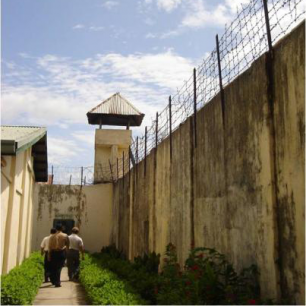
This project will focus on generating evidence around interventions that improve health and criminal justice outcomes of people released from prison, with a focus on supported accommodation services and men at high risk of re-offending.
In 2018 the number of people in Australian prisons increased for the seventh consecutive year (Statistics 2018). A 2018 report by the Australian Institute of Health and Wellbeing (AIHW) estimated that most (73%) prison entrants had previously been incarcerated, and that almost half (45%) had been incarcerated within the previous 12 months (AIHW 2019).
People who have been released from prison are often at their most vulnerable at this time (Baldry, McDonnell et al. 2006, AIHW 2019), and the high rates of re-offending among people released from custody indicate poor reintegration into the community for many individuals (Baldry, McDonnell et al. 2006, Payne 2007). As such, there is a need to identify and develop post-release programs that can produce positive outcomes for people released from custody (Seiter and Kadela 2003, Wright, Zhang et al. 2013, Growns, Kinner et al. 2016). People who are released from custody are at a higher risk of homelessness than the general population (Borzycki and Baldry 2003, Avery and Kinner 2015), with more than half (54%) of prison discharges expected to be homeless on release from prison in 2018 (AIHW 2019). Furthermore, as residential instability or homelessness are linked to higher rates of recidivism (Lutze, Rosky et al. 2013, Steiner, Makarios et al. 2015, Growns, Kinner et al. 2016), securing accommodation is one of the most significant challenges facing people following discharge (Roman and Travis 2006, Lutze, Rosky et al. 2013, Growns, Kinner et al. 2016).
A 2016 systematic review of evaluations of post-release supported accommodation found that studies were frequently methodologically flawed, and few consistent findings were evident, with regards to either effectiveness of programs in reducing recidivism, or program characteristics associated with positive participant outcomes (Growns, Kinner et al. 2016).
There is increasing demand within the field of criminal justice for more rigorous research and evaluation of interventions (Wright, Zhang et al. 2013). Demonstrating the impact of interventions is critical in developing evidence-based programs that can produce tangible criminal justice, health and social outcomes for individuals (Growns, Kinner et al. 2016).
The aim of the proposed study is to develop an evidence base for services targeting men who are at high risk of reoffending following release from prison in Australia. Specifically, the aims of each study are to:
- Identify evaluations of programs that aim to improve outcomes of people released from prison; describe the effectiveness of programs; and identify program components that are common across effective programs to facilitate establishment of a best-evidence model of care;
- Develop a best-evidence, standardised and adaptable program framework to be applied across services working with men released from prison;
- Evaluate the feasibility of implementing routine data collection processes in an existing program, and explore opportunities to use such data for quality improvement purposes; and
- Describe health and criminal justice impacts of a supported accommodation service for men released from prison.
A systematic review will be conducted to identify evaluations of programs that aim to improve outcomes of people released from prison; describe the effectiveness of programs; and identify program components that are common across effective programs (Aim 1).
Rainbow Lodge is a supported accommodation service for men who are at high risk of re-offending after leaving prison. The service is based in Sydney, NSW. A standardised program framework will be developed for supported accommodation services via consultations with the staff at Rainbow Lodge and staff of services across Australia using the nominal group technique, and based on the findings of the systematic review (Aim 2). This approach will ensure the generalizability of the best-evidence model of care framework.
Through collaboration between the researcher and staff of services across Australia, routine assessment tools will be identified to be embedded in the residential program components and outreach program components in the pilot site (Rainbow Lodge) (Aim 3).
Finally, this study will include data linkage using a larger, historical (2015-‐2019) sample of Rainbow Lodge residents and a comparison group (being people referred to Rainbow Lodge but not accepted due to lack of space). Criminal justice data will be sourced from the NSW Re-‐offending Database managed by the Bureau of Crime Statistics and Research, as well as hospital and mortality data to assess associations between Rainbow Lodge attendance and health outcomes (Aim 4).
Ongoing.
Dissemination of the methods described in this thesis will:
- Improve internal capacity and the capability of supported accommodation services for men who are at high-‐risk of re-‐offending after release from prison to conduct evaluations;
- Increase capacity of governments and policy experts to invest limited resources into effective programs, and ultimately lead to better outcomes for people leaving prison and their communities;
- Generate rigorous evidence in a field with a dearth of literature, particularly in the Australian context.






